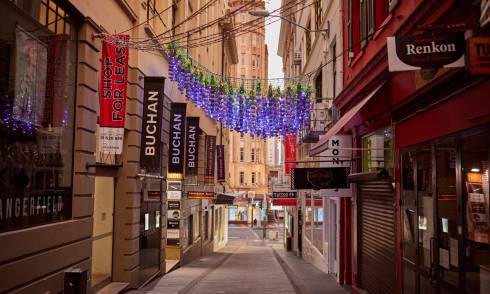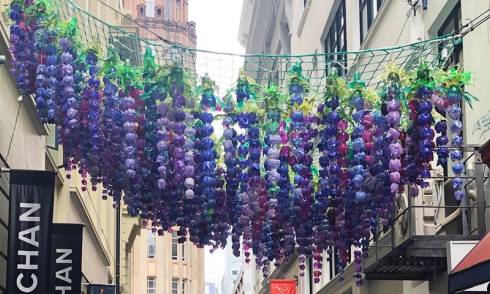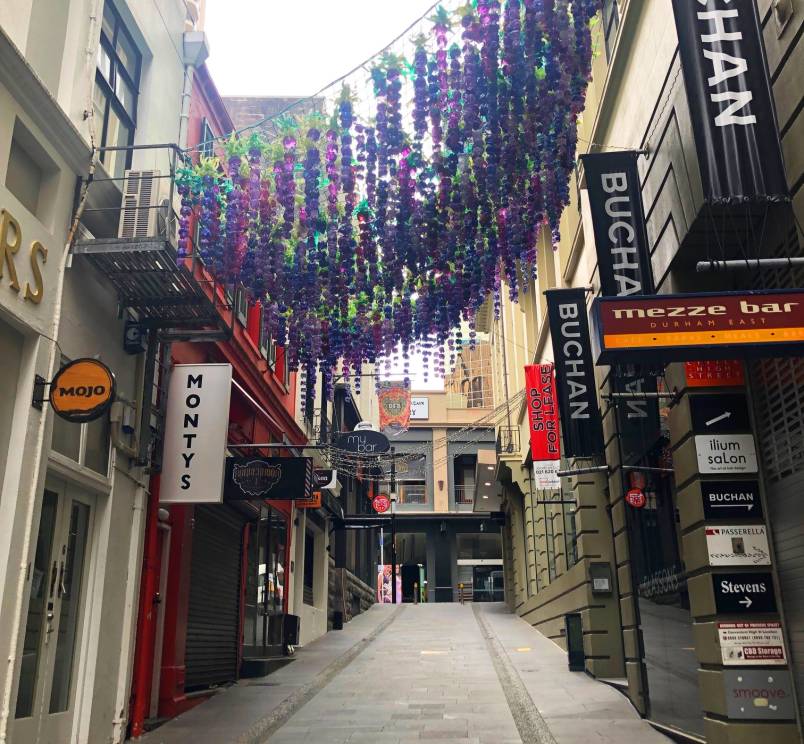An enchanted vine of fluorescent flowers, Wisteria Lane by Bobbie Gray, showcases the potential of plastic as a material for making art and demonstrates what some see as trash, others see as treasure and aims to bring the natural world front and centre into the built environment.
Meticulously spliced together, the slew of flora creates an otherworldly environment that is industrial yet natural. Each of the plastic elements are infused with the history of a previous use and place, encouraging reflection on the abundance of these castaway materials and how they impact our world.
The process of making Wisteria Lane mimics the lifecycle of flowers and plants. Waste plastic, that may otherwise be cast out into the environment, has contributed to the growth of a new generation of life forms. The delicate matrix of luminescence, manipulated plastic and electricity reinforce the flexibility, power, and preciousness of our own ecology.
Plastic is both an environmental hazard and a ubiquitous resource. Bobbie Gray has worked with plastic from our recycling bins to create Wisteria Lane, which in turn has diverted items from the waste stream. En masse, the individual works take on a power greater than themselves, the power to transform space and create a magical experience for visitors to the lane.
The pendulous flowers have been inspired by Wisteria, which is best defined as a breath-taking but aggressive vine that is likely to steal the beauty. Transforming Durham Street East into mesmerizing cascades of luscious purple-violet flowers that will take the viewers breath away.
Part of Artweek in the city centre.
Park for $2.50 per hour, to a maximum of $10.50 on evenings and weekends at the Victoria St car park. Find out more.


